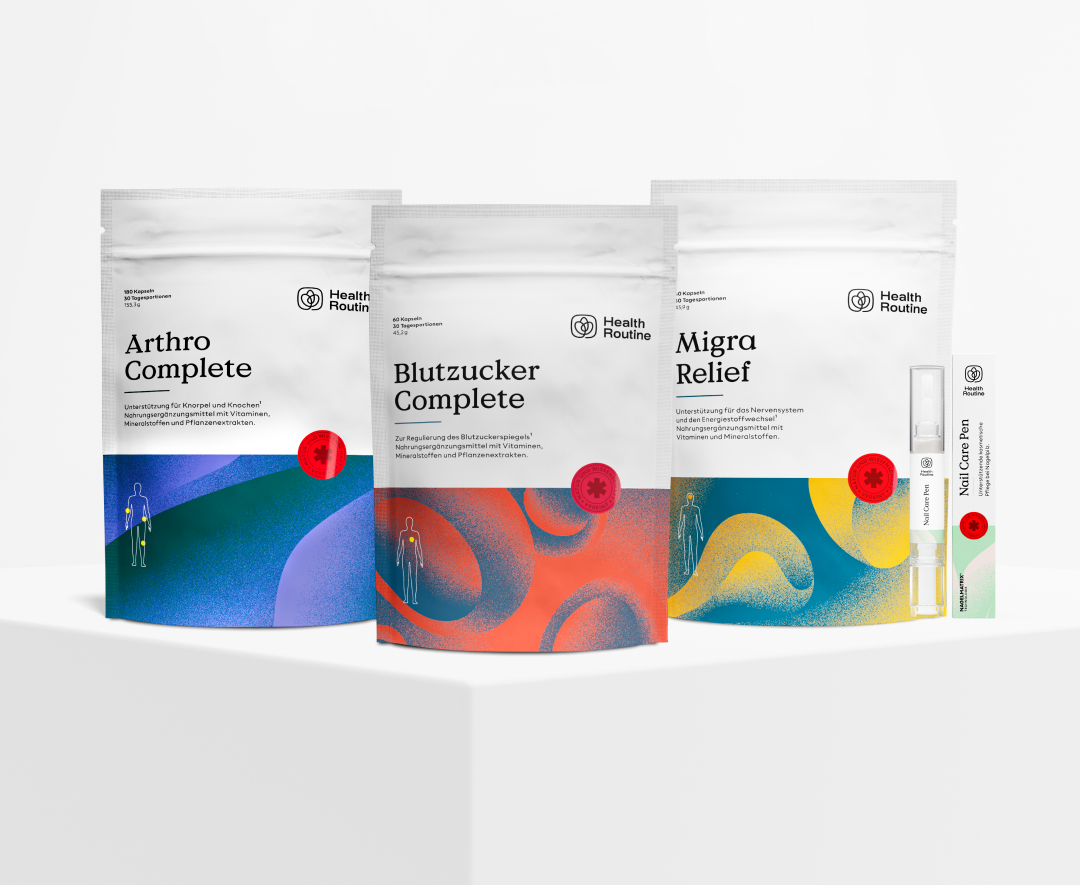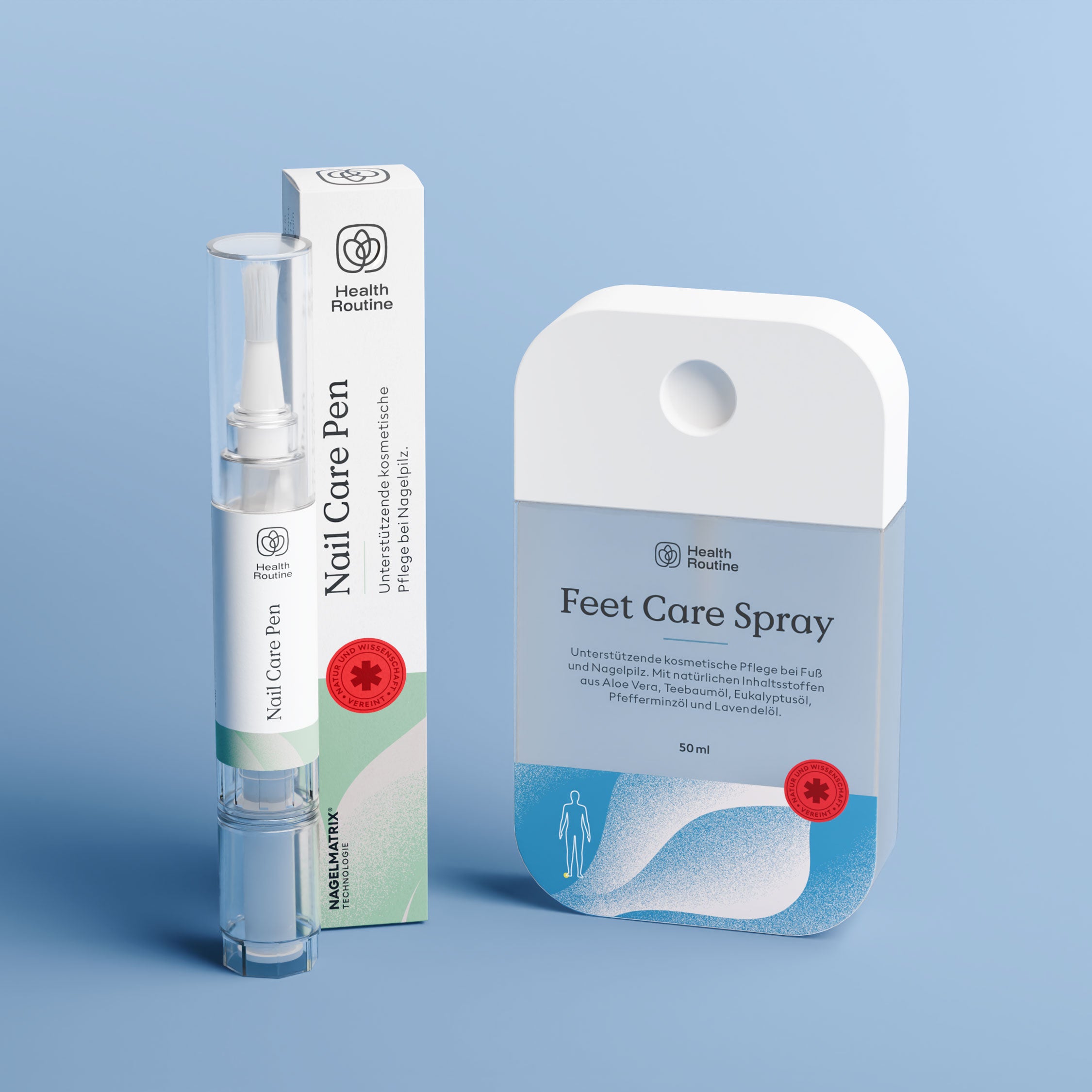The most important things at a glance
-
Foot care is particularly important in diabetes – among other things because of reduced sensitivity and increased susceptibility to infection.
-
A daily routine and medical foot care help reduce the risk of complications such as diabetic foot syndrome.
-
The combination of foot bath, gentle care and appropriate monitoring forms the basis of a well-thought-out care routine.
Why is medical foot care essential for diabetics?
In diabetes, not only is the metabolism disrupted , but blood circulation is also impaired . This makes those affected particularly susceptible to injuries and delayed wound healing.
The risk of leg and foot infections is also increased in diabetes, which can lead to diabetic foot syndrome (diabetic foot for short).
Therefore, regular medical foot care is essential for diabetics. It helps prevent complications such as diabetic foot. Professional diabetic foot care should only be performed in a licensed podiatry practice .
In contrast to cosmetic foot care, medical professionals are trained in issues such as diabetic feet.

What are the risks and dangers of diabetes in foot care?
Diabetes mellitus is often associated with a diabetic foot, which is characterized by the following symptoms:
- Increased risk of injury
- Nerve damage
- Dry, cracked skin
- Risk of infection
- Delayed wound healing
How diabetes increases the risk of injuries
Diabetic foot is associated with an increased risk of injury . The often high blood sugar levels can lead to damage to nerves and blood vessels.
This impairs the sensation of pain , and those affected are unable to feel any injuries to their feet. Doctors refer to this as polyneuropathy, a diabetic nerve disorder, which can lead to numbness .
How diabetes can lead to dry, cracked skin
Dry feet are also not uncommon in people with diabetes. Neuropathy (nerve damage) reduces perspiration, causing the skin on the feet to quickly become dry and cracked .
Risk of infection in diabetes
Dry and often cracked skin is particularly susceptible to injuries. Since these injuries can go unnoticed for long periods due to neuropathy, the risk of infection also increases in people with diabetes.
Why is wound healing often delayed in diabetes?
Even the smallest injuries (so-called minor trauma) can develop into ulcers in diabetic feet. This is due to delayed wound healing resulting from circulatory disorders and nerve damage.
10 expert tips: What diabetics should pay attention to in their daily foot care!
Diabetics need to pay special attention to daily foot care to effectively prevent injuries and potential complications. Here's what you should keep in mind:
1. Wash your feet with our nourishing foot bath salts from Health Routine
Proper foot washing is a key part of your daily foot care routine. This is especially true for diabetic foot care.
Diabetologists recommend a three-minute foot bath in lukewarm water . The water temperature should be no more than 35 degrees Celsius , as the disease impairs the patient's ability to feel warm.
To make sure you don't exceed the recommended water temperature, you can use a thermometer.
Our foot bath salts are recommended as an effective bath additive . The innovative formula contains only natural ingredients that have proven particularly effective for gentle and long-lasting foot care in diabetics, such as:
- Sea salt
- Baking soda
- and essential oils
Sea salt has long been considered an important ingredient in diabetic foot care due to its antiseptic and anti-inflammatory properties.
Holistic therapists believe that sea salt provides important support for diabetic foot by reducing the risk of infection.
Baking soda is said to have positive effects on acid-base balance . This is particularly important for diabetics, as the skin's pH level is not within the normal range due to reduced perspiration. Baking soda can provide support in this regard.
We also followed the recommendations of scientific studies when selecting the essential oils for our foot bath salts . Tea tree oil is used in holistic medicine for its cleansing and antibacterial properties.
Menthol is said to be invigorating and purifying , while eucalyptus and peppermint provide soothing freshness . Magnesium sulfate can soothe irritated skin and provide beneficial moisture .
Note: A foot bath for diabetics should not be performed if there are open wounds.
2. Nail files: How to avoid the risk of ingrown toenails
Proper nail care also plays an important role in diabetes to prevent ingrown toenails to avoid. Due to the disease, those affected often suffer from brittle toenails .
The risk of nail fungus is also increased in diabetes. Therefore, you should always monitor the health of your toenails. Never use nail clippers or scissors . These tools can cause injury and even damage the delicate nail plate .
Instead, experts recommend using a high-quality glass file to trim your toenails . This allows you to gently and effectively trim your nails to the desired length and remove any sharp edges once or twice a week .
This is especially important to avoid injuring neighboring toes.
3. Visual and tactile inspection: A must in diabetic foot care
Due to possible nerve damage, perception in the area of the feet is severely limited.
To treat injuries, pressure sores, fungal infections or other foot problems such as warts To detect diabetic foot problems in a timely manner, diabetic foot care includes a daily visual examination . You should also pay attention to the spaces between the toes .
4. Dry your feet thoroughly
After washing, the feet must be dried thoroughly to minimize the risk of athlete's foot.
Use a soft towel to gently dry your feet and the spaces between your toes .
Caution: Dry rubbing is not recommended due to the sensitive skin that is prone to cracking.
5. Gently remove calluses
Calluses also play a major role in diabetes. Therefore, diabetologists recommend removing calluses weekly after a foot bath. We've explained how you can do this gently and effectively here .
6. Apply cream to your feet properly
Diabetic feet are especially dependent on adequate moisture . Applying moisturizer daily helps keep the skin supple and thus contributes to reducing the risk of infection.
In addition to a foot cream with urea, experts also recommend our Feet Care Spray . With its purely natural ingredients, it provides your feet with maximum moisture and care.
Unlike greasy creams, which are not recommended for people with diabetes, our Feet Care Spray has the optimal moisture content . Greasy creams, on the other hand, clog pores and increase the risk of infection.
Caution: The spaces between the toes should be avoided when applying cream daily. Some experts also see an increased risk of infection here.
7. Why is it important to protect your feet from infections?
Since the pain stimulus can often no longer be perceived due to nerve damage in diabetes, those affected should always be aware of the increased risk of infection in swimming pools, hotel rooms , etc.
Our Feet Care Spray ensures natural foot hygiene and can provide you with the best possible support both at home and on the go .
Our customers use it not only for daily care, but also after swimming , sauna or gym .
8. How to protect your feet from injuries
Not only foot care contributes significantly to well-being in diabetes, but appropriate protective measures also ensure that diabetic feet are optimally protected from injury and infection. These include:
- The use of special diabetic socks without pressing seams and cuffs
- Soft shoes without annoying inner seams.
- No direct heat (e.g. sunbathing, hot water bottles)
9. Trimming toenails: the best technique for healthy feet
To trim your toenails particularly easily and gently, you should first take a foot bath with foot bath salts carry out.
After patting your feet, you can use our glass file to shape your toenails without risking injury . Thanks to the microfine grain, your nails are not only sealed but also equipped with innovative splinter protection .

10. Risks of self-treatment: Why you should see a doctor if you have foot problems
If you notice pressure sores, blisters, or injuries during your daily visual examination, you should consult a doctor as a precaution. Since the risk of infection is increased in diabetic feet, you should avoid self-treatment.
Foot care for diabetes: your regular checklist
In addition to washing, applying cream and trimming nails, foot care for diabetes includes other points that we have summarized for you in a checklist:
- Check shoes: Always check your shoes for potential injury before putting them on. Check the material , the degree of wear , the seams, edges , and any foreign objects.
- Inspect socks: Also check the fit of your socks to avoid both chafing and pressure points. Pay particular attention to the seams and cuffs. The material should be breathable .
- Check your feet regularly: Check your feet daily for blisters, pressure sores, and injuries . Remember to check your toes and toenails, too.
This is how podiatric treatment of the diabetic foot works
Medical foot care for diabetics consists of various measures, such as:
- Regular check-ups of foot health
- Trimming toenails
- Professional callus removal
- Treatment of pressure points and foot health problems such as warts, corns, etc.
- Comprehensive advice on foot problems and discussion of preventive measures
How can diabetic foot be effectively prevented?
Diabetic foot can be effectively prevented with a daily care routine, visual inspection and appropriate protective measures as well as the right shoes and stockings.
Foot care products for diabetics: What do you really need?
The market for diabetic products is growing and, of course, is also expanding into foot care products.
However, for professional diabetic foot care you only need a good foot bath salt , a cream with urea and our Feet Care Spray if you value quick yet effective care .
A high-quality glass file for shortening toenails completes the foot care products for diabetics.
Why diabetics should pay particular attention to athlete's foot
Diabetic feet are characterized by dry and cracked skin , making it particularly easy for fungi and bacteria to penetrate. Therefore, those affected should pay particular attention to athlete's foot and other infectious diseases.
Conclusion
Diabetic foot care is a major challenge for many sufferers. But with a daily care routine and visual inspection, you can set the course for healthy feet despite diabetes.
Of course, washing, patting, and moisturizing your feet every day involves some work. Trimming your toenails also takes time. But our high-quality care products provide the best possible support.
With our Feet Care Spray , you can effortlessly moisturize your feet. Our foot bath salts , with their valuable ingredients, help minimize the risk of infection .
And with our glass file, trimming your toenails weekly becomes a soothing meditation.
FAQ
Is diabetic foot care covered by health insurance?
If diabetics suffer from diabetic foot syndrome (circulatory and sensory disorders), diabetic foot care is paid for by the health insurance company.
However, there are two prerequisites for this:
- You need a prescription
- Medical foot care must be performed in a podiatric practice . Cosmetic foot care is not permitted.
Is a diabetic foot curable?
Diabetic foot is defined as damage to nerve pathways . This damage is irreversible and therefore cannot be reversed .
Injuries such as wounds, however, can be healed . However, in diabetics, this often takes a relatively long time due to delayed wound healing.
🌿 Discover more guides from Health Routine now:
- Treating nail fungus: symptoms, remedies and Tips
- Healthy nails » Tips for stronger and beautiful nails
- Hollow nails: Everything about causes, Symptoms & Treatment
- Brittle toenails » Causes, symptoms & Treatment
Your medical advice
Our products are not intended to diagnose, treat, cure, or prevent any disease. The information provided in this article is for informational purposes only and is not intended as a substitute for advice from your physician or other healthcare professional.
Furthermore, our products are not a substitute for medications or other treatments prescribed by your doctor or healthcare provider. Regardless of the due care taken, no liability or warranty is assumed for the
- Accuracy,
- topicality,
- completeness
- and availability of the information provided.
No legal claims can be made for any damages potentially resulting from the use and application of this information. Liability claims of any kind are excluded.






